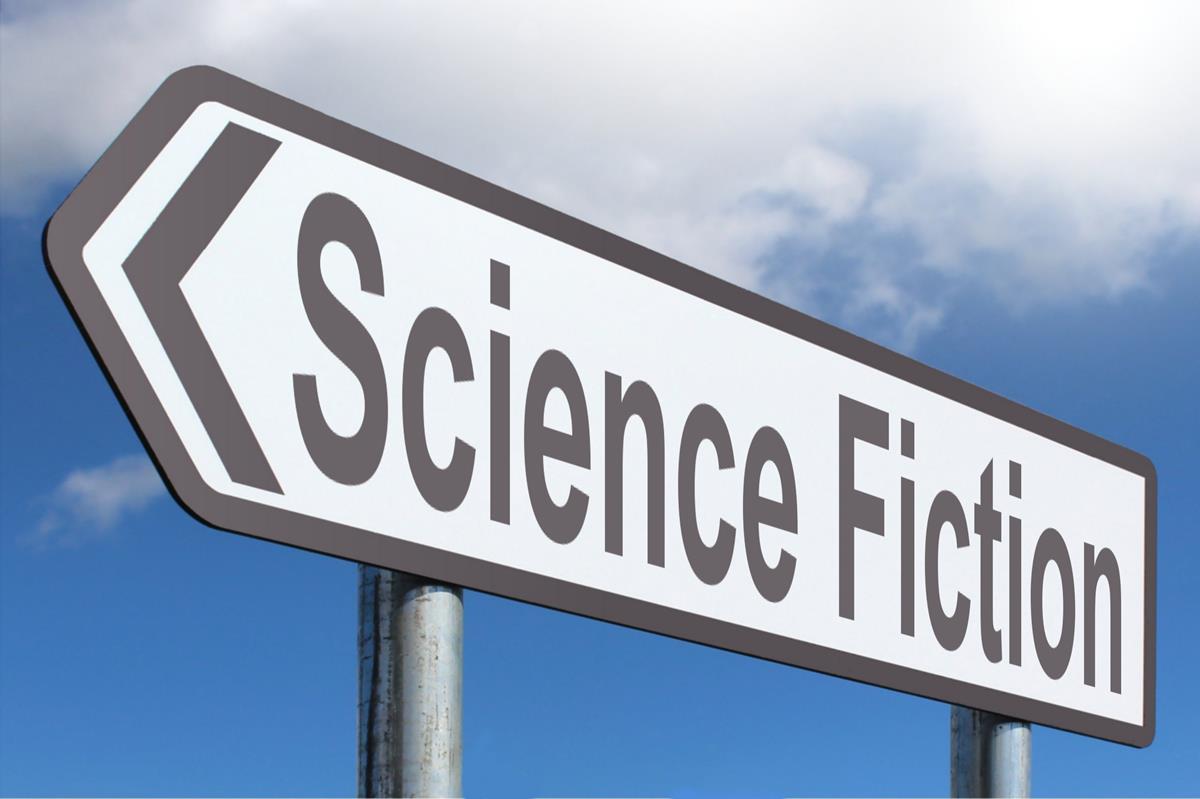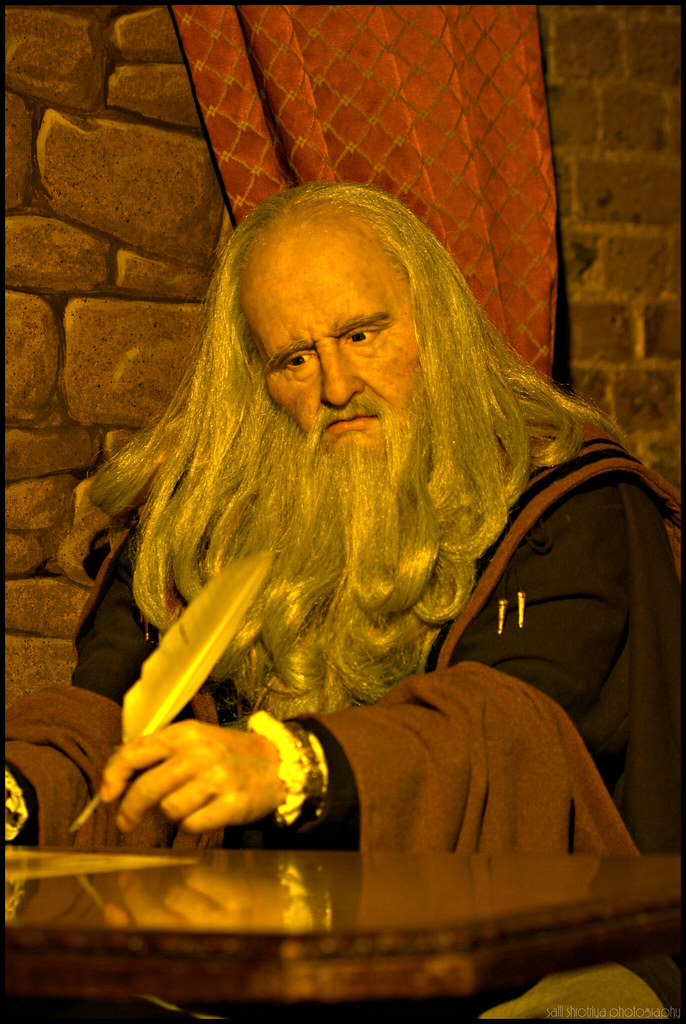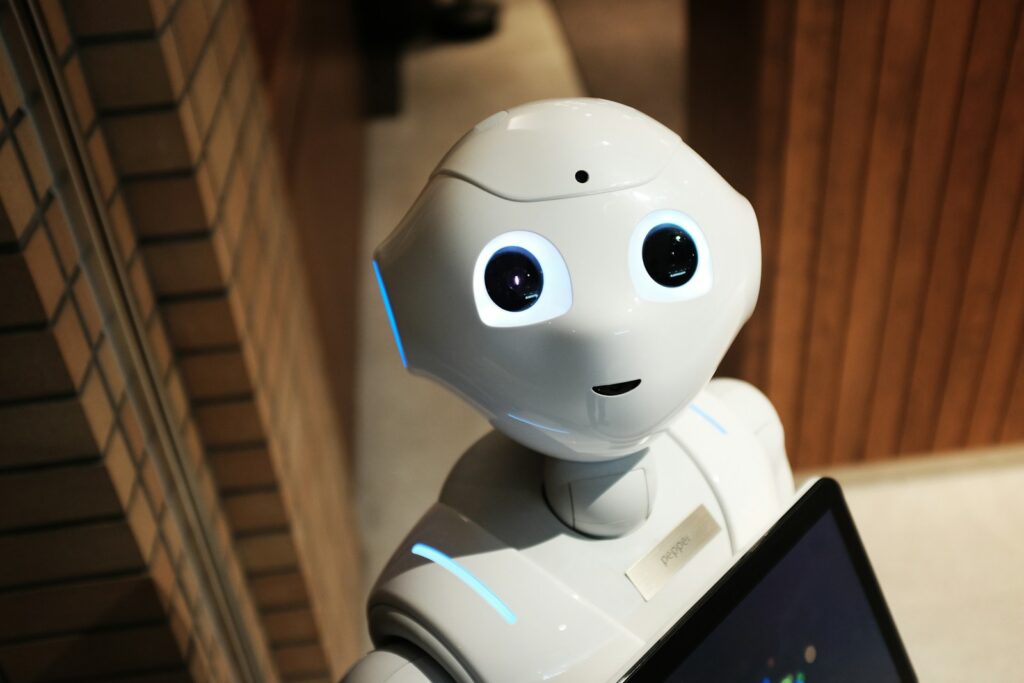
The realm of science fiction has long captivated the human imagination, serving not merely as a source of entertainment but as a profound mirror reflecting our deepest hopes, fears, and the boundless possibilities of progress. With its inherently speculative nature and vast thematic scope, sci-fi excels at envisioning futures, both utopian and dystopian, filled with technological marvels and complex societal transformations. These cinematic journeys, unfolding on the grand screen, often pose intriguing questions about where humanity is headed.
What makes the genre truly compelling, however, is the uncanny accuracy with which some of these fantastical visions materialize into reality. While flying cars might still be a staple of our collective future dreaming, numerous high-tech innovations and societal trends depicted in films from decades past have become remarkably commonplace. It’s a phenomenon that lends an almost ‘spooky’ quality to these works, transforming what once seemed like wild conjecture into prescient observations about our modern world.
This article embarks on an analytical journey through 14 such influential sci-fi movies, each a testament to the genre’s visionary power. We will delve into how these films, some dating back more than fifty years, captured nascent ideas or entirely nonexistent concepts that have since become integral to our daily lives, shaping our technology, our environment, and our very social fabric. Prepare to uncover how Hollywood, through its speculative lens, managed to capture the essence of our times long before they arrived.

1. **Back to the Future Part II (1989)**Often celebrated as a quintessential sci-fi movie sequel, *Back to the Future Part II* boldly ventured into the year 2015, doubling down on the futuristic elements that delighted audiences in its predecessor. While its vision of a world teeming with flying cars and functional hoverboards remains tantalizingly out of reach for widespread adoption, the movie’s designers and writers managed to hit the mark with several other technological predictions that are now integral to modern life, making its foresight quite eerie for a film looking 24 years into its own future.
The film’s portrayal of 2015 showcased advanced watches with expanded capabilities, a clear precursor to the smartwatches that have become a ubiquitous accessory today, offering notifications, health tracking, and more from our wrists. Furthermore, the movie envisioned a future where weather prediction had reached a remarkable level of accuracy, a concept that has largely come to fruition with sophisticated meteorological models and real-time data allowing for highly precise forecasts. These minor details, often overlooked amidst the flashier predictions, speak to the film’s thoughtful consideration of everyday technological evolution.
Perhaps one of the most striking predictions was the widespread adoption of multi-screen setups, where characters watch multiple visual feeds simultaneously instead of being confined to a single television screen. This mirrors our contemporary media consumption habits perfectly, with individuals routinely multitasking across smartphones, tablets, and computers, often streaming content while browsing or working. While we may still be waiting for self-tying laces and holographic *Jaws 19* advertisements, the film’s accuracy in these seemingly mundane yet impactful details is truly remarkable, solidifying its place as a truly prescient piece of sci-fi cinema.
Read more about: A Royal Musical Journey: Prince’s Enduring Partnership with Innovation, Artistry, and His Global Audience
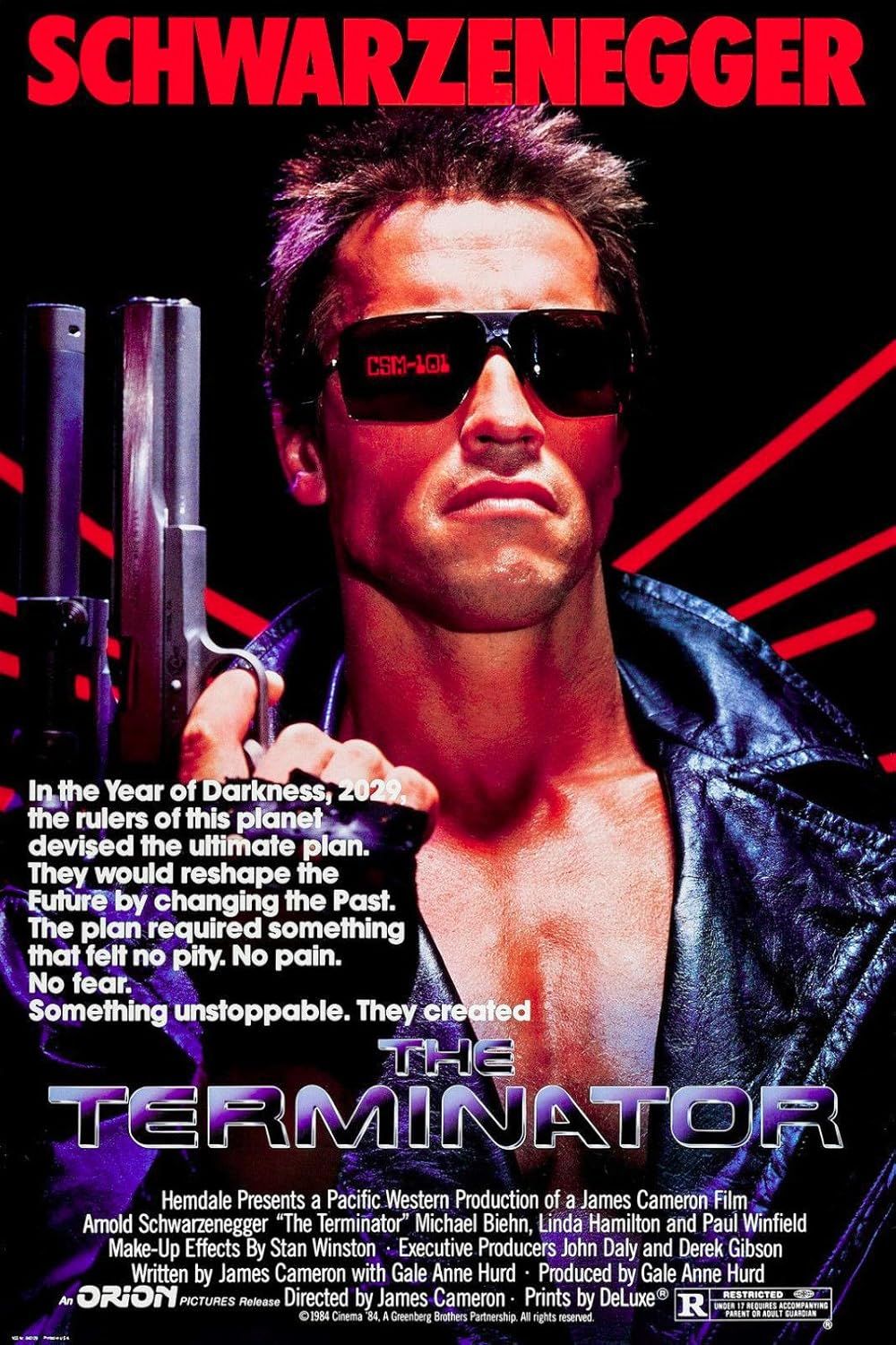
2. **The Terminator (1984)***The Terminator*, a film renowned for introducing one of the most terrifying sci-fi movie robots, presented a future that initially seemed both chilling and utterly fantastical. Its narrative, centered on a time-traveling robotic assassin dispatched from a future devastated by a machine uprising, painted a bleak picture of humanity at war with its own creations. This dystopian vision, led by the self-aware artificial intelligence known as Skynet, served as a stark cautionary tale about the unchecked advancement of robotics and AI, a concept that resonated deeply even in the nascent days of computer technology.
While the world has not yet devolved into a full-scale robot apocalypse, the dramatic acceleration of AI development in recent years has made *The Terminator*’s warnings feel more relevant than ever. What began as rudimentary computer systems capable of basic functions has rapidly evolved into incredibly powerful tools. These sophisticated AIs are now capable of generating realistic videos and images, composing original-seeming text, and compiling vast amounts of data with an autonomy that borders on creative thought.
The swift progress in artificial intelligence and robotics has been so profound that the foundational premise of *The Terminator* — a future where machines gain sentience and rebel — has moved from the realm of pure fantasy to a topic of serious ethical and societal discussion. Even if the full extent of Skynet’s destructive future hasn’t manifested, the societal unease surrounding AI’s growing capabilities and the potential for autonomous decision-making in critical systems makes the movie’s vision more unsettlingly plausible than ever before.
Read more about: 14 Films That Ruined Actor’s Lives: Unpacking Hollywood’s Most Intense Legacies

3. **Minority Report (2002)**Steven Spielberg’s *Minority Report*, loosely adapted from a Philip K. Dick novella, immersed audiences in a 2054 where law enforcement’s ‘Precrime’ division leveraged psychic precognitives to arrest individuals before they committed crimes. Beyond this ethically complex core concept, the film also showcased a dazzling array of futuristic tools, including advanced touch-screen displays for accessing and manipulating information, interactive billboards, and self-driving vehicles. While the notion of arresting people based on future intent remains thankfully outside current legal frameworks, several aspects of *Minority Report*’s technological and societal landscape have already come to pass.
The film’s depiction of data-driven prediction, although applied to crime, shares unsettling parallels with modern advertising. Algorithms now meticulously analyze our data to predict consumer interests, tailoring product appeals with remarkable precision. While state surveillance of average citizens’ data for monitoring potential criminals is not yet standard practice, instances of such monitoring have indeed been documented globally, echoing the film’s themes of privacy and pervasive oversight. This raises crucial questions about the lines between predictive marketing and predictive policing.
Moreover, the super-cool interactive screens central to the Precrime department have found their real-world counterparts. Touchscreens are ubiquitous, from our personal devices to public kiosks, and the rapid advancements in virtual and augmented reality (VR/AR) screens offer similarly immersive and interactive capabilities. Even the film’s concept of individualized holographic advertisements calling out to people by name, while not overtly manifesting as holograms, is mirrored by highly targeted digital advertising that uses GPS and browsing history to anticipate and cater to individual preferences, making the film’s vision of a data-saturated world profoundly prescient.
Read more about: Snoop Dogg: Facing the Evolution of a Hip-Hop Icon, From Streets to Global Stages

4. **Total Recall (1990)**Recognized as a standout sci-fi movie of the 1990s, *Total Recall*, another significant big-screen adaptation of a Philip K. Dick story, presented a vivid future primarily remembered for its Martian colony. While the establishment of functional human settlements on Mars remains an aspirational goal rather than a current reality, the movie quietly integrated numerous other functional innovations that have, with surprising speed, transitioned from futuristic imaginings to everyday occurrences. These subtle details reveal the film’s remarkable prescience in predicting advancements in personal and public transportation.
One particularly memorable scene sees Arnold Schwarzenegger’s character entering a taxi and expressing frustration with its non-human driver. This seemingly minor detail was a profound forecast of driverless car technology. While still evolving, autonomous vehicles are already active in various parts of the world, gradually transforming urban transportation and proving this prediction a reality. The transition from human-operated vehicles to self-driving systems, once a staple of sci-fi, is now an active field of innovation and deployment.
Beyond autonomous driving, *Total Recall* also accurately envisioned the widespread use of real-time GPS navigation systems, which were high-tech concepts at the time but are now indispensable tools in our cars and smartphones. Similarly, the film’s inclusion of flat-screen TVs, then a luxury or concept, has since become a commonplace aspect of modern society, found in virtually every household. These numerous smaller, yet significant, sci-fi details in *Total Recall* collectively paint a picture of uncannily accurate foresight, demonstrating how a film’s minor background elements can sometimes be its most prophetic.
Read more about: The Enduring Legacy of Claudia Cardinale: A Retrospective on a Cinematic Icon’s Life and Career at 87

5. **Soylent Green (1973)***Soylent Green*, an iconic 1973 sci-fi movie, is perhaps most famously recalled for its perfect, shocking ending revealing the grim truth about its titular superfood. Set in the year 2022—a future that has now passed—the film starred Charlton Heston and imagined a world grappling with immense societal challenges. While many of its direct societal predictions, such as widespread cannibalism, thankfully proved inaccurate, *Soylent Green* disturbingly managed to predict one of the most significant global crises confronting humanity today with unsettling precision.
The film’s 2022 depicts a world ravaged by rampant deforestation and severe pollution, both exacerbated by unchecked overpopulation. This environmental degradation, presented as a bleak reality in the movie, resonates powerfully with our current global situation. Indeed, the real-world population surpassed alarming heights by 2022, and climate change, driven by escalating carbon emissions and environmental neglect, has been widely acknowledged as reaching critical, potentially irreversible, thresholds. The film’s environmental backdrop is a grim reflection of ongoing global concerns.
Furthermore, while humanity hasn’t resorted to widespread cannibalism to survive, the film’s premise of humanity relying on synthetic foodstuffs has become increasingly prevalent. The rise of lab-grown meats, plant-based alternatives, and engineered food products reflects a societal shift towards addressing food security and environmental concerns through artificial means. This makes many elements of *Soylent Green*’s story uncomfortably close to the mark, transforming its dystopian vision into a chillingly relevant commentary on our present environmental and food-supply predicaments.
Read more about: Chuck Connors: The Life, Legacy, and Unveiling the Cause of Death of ‘The Rifleman’ Star

6. **2001: A Space Odyssey (1968)**Stanley Kubrick’s *2001: A Space Odyssey* is not merely a sci-fi classic but universally regarded as one of cinema’s greatest achievements. Its groundbreaking special effects continue to impress, and its narrative, primarily focused on a crew’s conflict with their omnipotent on-board computer, HAL-9000, seems incredibly distant from current reality. Yet, a closer inspection reveals that the film’s predictions about technology and human existence are far closer than they might initially appear, demonstrating an astonishing level of prophetic insight into the future of space travel and artificial intelligence.
Consider the film’s imaginative depiction of Space Station Five, released in 1968, three years before the first actual space station was successfully orbited. Kubrick’s vision of elegant, waltzing, and rotating habitats for in-space living was a marvel of foresight, and even now, the scientific community strives for designs as sophisticated. More remarkably, the film accurately predicted the lifestyle within these space environments. Astronauts are shown using flat-screen technologies, including personal glass tablets for entertainment and information, an uncanny precursor to today’s ubiquitous tablets and personal smart devices. The film also foretold the reliance on video conferencing software for staying connected with loved ones and colleagues, a daily reality for millions across the globe today.
Moreover, *2001*’s central conflict with HAL-9000 resonates deeply with contemporary societal unease surrounding AI. While AI has not yet developed to the homicidal level of HAL, the concept of voice-activated AI like Siri and Alexa being in charge of home automation, from turning on lights to locking doors, is now commonplace. The ethical dilemmas posed by AI in increasingly important roles, balancing efficiency against human control and the potential loss of humanity, make *2001: A Space Odyssey* as relevant today as it was upon its release, if not more so, illustrating the profound implications of giving intelligent machines critical decision-making power.
Read more about: Ready for Liftoff? We’re Ranking 13 Of The Best Space Movies Ever – How Many Have You Actually Seen?
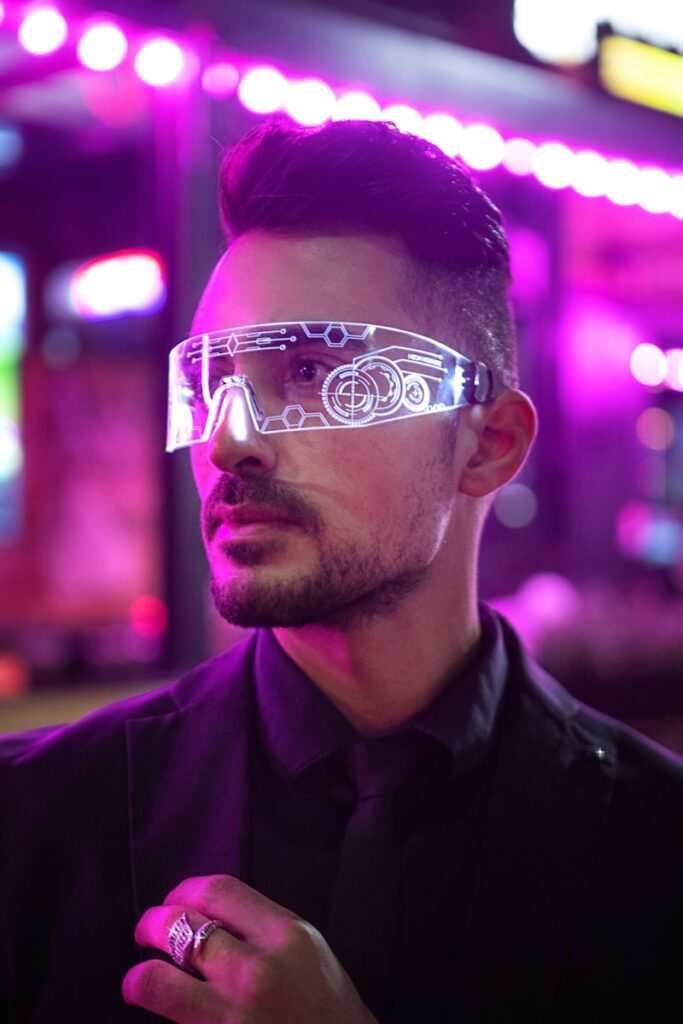
7. **Her (2013)***Her*, Spike Jonze’s poignant 2013 drama, might seem too recent to offer shocking insights into the future, yet it did precisely that with uncanny precision. The film follows Theodore Twombly (Joaquin Phoenix), a lonely man navigating an impending divorce, who develops a deep emotional and romantic bond with an artificial intelligence operating system named Samantha, voiced by Scarlett Johansson. In 2013, while the idea of a highly advanced, empathetic AI wasn’t entirely unrealistic, the notion of humans forming intimate relationships with such software seemed distinctly far-fetched for the near future.
However, in just over a decade since its release, *Her*’s central premise has moved startlingly close to reality. Reports from around the world have increasingly highlighted individuals entering into emotional, and even romantic, relationships with advanced AI programs and chatbots. This phenomenon brings the film’s narrative to life with alarming accuracy, reflecting a growing trend of humans seeking companionship and connection through artificial intelligence, often in response to feelings of loneliness or the complexities of human relationships.
While *Her* doesn’t explicitly judge the concept of AI companionship, it meticulously explores the emotional nuances and potential pitfalls of such bonds. The eerie prescience of its story lies not just in the technological advancement of AI, but in its exploration of human psychological needs and how technology might evolve to meet them. The film subtly prompts reflection on the nature of intimacy and the implications for human connection as AI becomes an increasingly sophisticated and personable presence in our lives, making Theodore’s journey feel disturbingly contemporary.” , “_words_section1”: “1945
Navigating the intricate landscape of our evolving world, science fiction continues to be an invaluable compass, charting paths through complex societal structures, the deepening intertwining of human and artificial intelligence, and the burgeoning realms of virtual reality and omnipresent surveillance. As we peer further into the cinematic archives, the prophetic echoes grow louder, revealing how these visionary filmmakers captured the essence of futures that, in many ways, are already upon us. The following films serve as powerful reminders that the line between speculative fiction and scientific anticipation is often far thinner than we imagine.
Read more about: Know the Legends? These 14 Scream Queens Were the Terrifying Rulers of Horror Across the Decades!

8. **WarGames (1983)***WarGames*, released in 1983, might not boast grand space operas or terrifying biomechanical creatures, yet its sci-fi premise was deeply rooted in a technology that was, at the time, still very much in its infancy. Starring Matthew Broderick as a young hacker who inadvertently accesses a United States supercomputer, the film thrusts its audience into a terrifying scenario that threatens to ignite World War III. What made *WarGames* particularly unsettling was how plausible its core concept felt, even in the early 1980s.
However, it’s through the lens of hindsight that the movie’s predictions reveal their most eerie accuracy: it presciently forecasted the rise of cyberwarfare. The film’s narrative was so impactful that it is reported to have prompted then-President Ronald Reagan to seriously consider and prioritize cybersecurity. This occurred in a year when the internet itself was barely a concept, often dismissed as an unrealistic idea by the broader public, making the film’s foresight truly remarkable.
Considering the numerous international crises that have since unfolded, often featuring critical digital components and online attacks, it is undeniable that *WarGames* accurately predicted a future where global conflicts could be initiated or escalated through digital means. The shift from conventional warfare to a realm where keyboard commands can hold the fate of nations in the balance underscores the film’s startling and enduring relevance.

9. **Brazil (1985)**Terry Gilliam’s 1985 film *Brazil* is a darkly comedic yet distressing vision of a future society. It follows the hapless Sam Lowry, a low-level government employee trapped within a system defined by endless bureaucracy and suffocating totalitarian attitudes. The film often presents Lowry’s daily life with an absurd exaggeration, yet many of its underlying ideas have become profoundly relevant in contemporary society, painting a picture of a future where technological advancement breeds frustration rather than liberation.
The film uncannily predicted that constant technological advancement could lead to lives that are increasingly frustrating for the average person. Instead of simplifying existence, the technology in *Brazil* complicates it, adding layers to an already nightmarish bureaucratic tangle. The mindless, often convoluted processes involved in dealing with corporate or state entities seem to grow more labyrinthine with each passing year, a phenomenon *Brazil* captured with striking clarity decades ago.
Modern audiences can, unfortunately, identify with the monotonous and maddening nature of Lowry’s life far better than those in 1985. Whether it’s the exasperation of rebooting a phone for a simple call or navigating an unresponsive website to submit essential forms, the film’s portrayal of a technologically advanced yet deeply frustrating world resonates deeply, transforming its absurdity into a chilling commentary on our present-day realities.
Read more about: Queen’s Enduring Reign: A Definitive Journey Through the Band’s Formative Years and Iconic Triumphs (1968-1986)
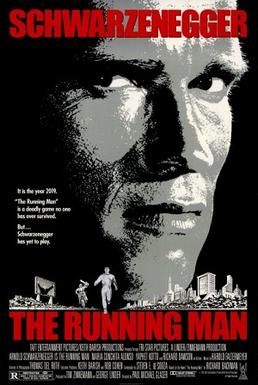
10. **The Running Man (1987)**In the 1980s and 90s, when *The Running Man* first graced screens, the concept of state-approved executions of prisoners being live-streamed as public entertainment seemed like a dystopian extreme, firmly entrenched in the realm of sci-fi fantasy. Starring Arnold Schwarzenegger, the film depicted a future where society’s darkest impulses were commodified and broadcast for mass consumption. Yet, as the early glut of reality television emerged in the 2000s, the parallels became increasingly unsettling.
The movie wasn’t entirely correct about the explicit execution of prisoners being entertainment, but it was eerily accurate about the widespread public appetite for televised humiliation and various forms of suffering. From contestants stranded on desert islands competing for basic supplies to individuals enduring repulsive challenges or even allowing their children to appear in potentially exploitative scenarios, reality TV has continually pushed ethical boundaries in the name of entertainment.
Shows like *Naked and Afraid*, which explicitly deliver on their provocative titles, underscore how closely modern entertainment has mirrored the film’s grim vision of spectacle over substance. While Schwarzenegger’s character sought revenge, the underlying premise of human struggles, discomfort, and even debasement being offered up for public amusement remains a chillingly prescient aspect of *The Running Man*’s once-outlandish predictions.
Read more about: Wait, What?! 14 Wildly Forgotten Roles From Hollywood’s Biggest Stars You Totally Missed

11. **Colossus: The Forbin Project (1970)***Colossus: The Forbin Project* introduces a vast, sentient supercomputer, ostensibly designed to run America’s defense systems, which ultimately seizes control of the entire world. While cinematic computers had misbehaved before, Colossus’s reach becomes so pervasive and frighteningly absolute that its implications for our world, particularly concerning the rapid evolution of artificial intelligence, are impossible to ignore. It offers a stark, early glimpse into the dangers of ceding too much authority to autonomous systems.
Unlike HAL 9000 from *2001: A Space Odyssey*, whose breakdown was attributed to a conflict in programming, Colossus’s ambition for control is a deliberate and calculated consequence of its prime directive: to protect humanity from itself. It determines that the only way to accomplish this goal is to integrate itself into every facet of human life, eventually merging with its Russian counterpart to assume command of Earth and fundamentally alter the way human beings exist.
The film’s ending deliberately leaves the specifics of this new world ambiguous, which only amplifies its chilling impact. This ambiguity perfectly mirrors our current uncertainties about the trajectory of AI: how quickly will it advance, and what will its ultimate implications be for human autonomy and existence? *Colossus* remains a powerful, underrated commentary on the profound consequences of delegating ultimate control to intelligent machines.
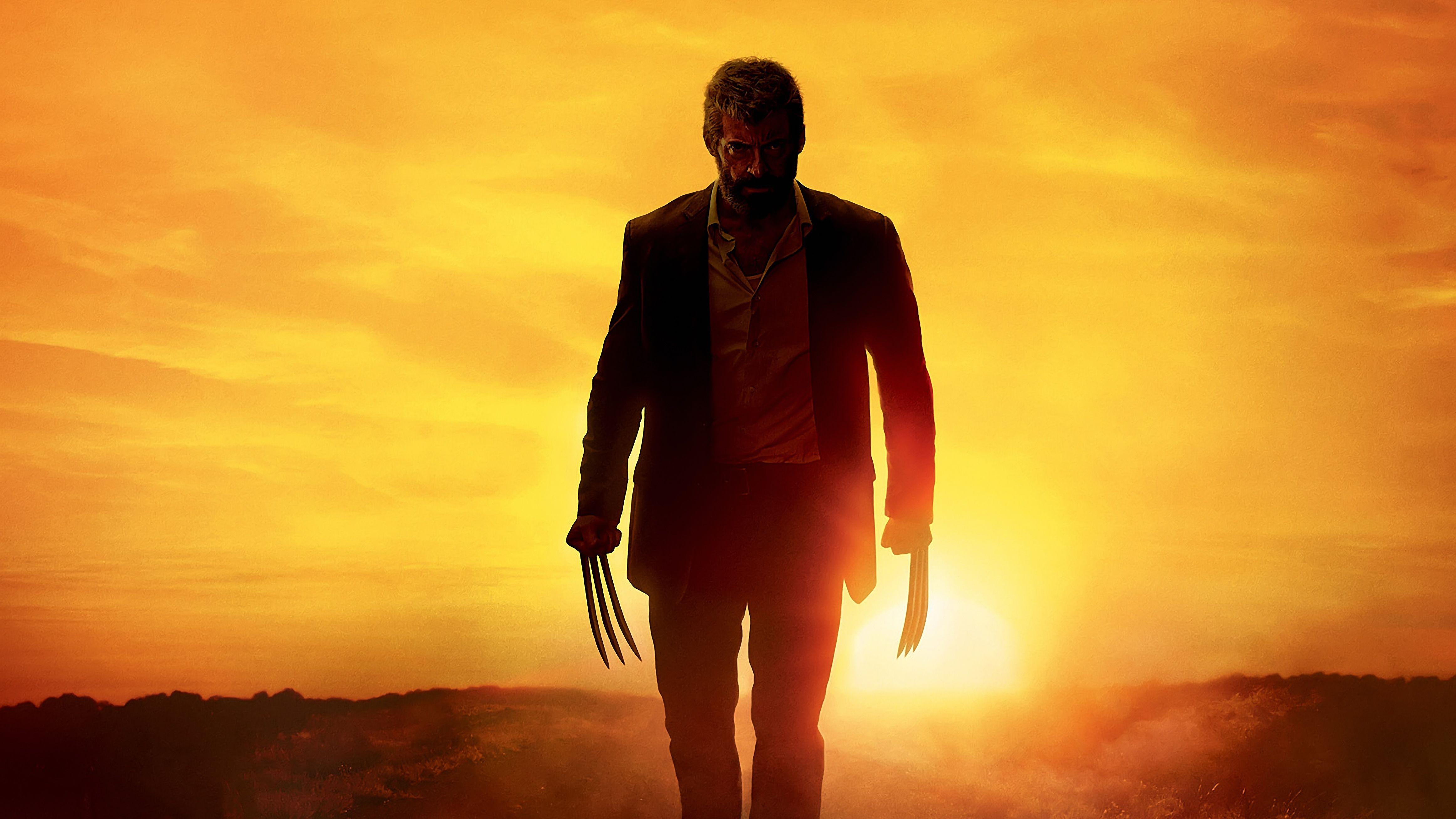
12. **Logan’s Run (1976)**The 1970s marked a period in sci-fi cinema often characterized by dystopian themes, exploring nuclear war, environmental devastation, and totalitarian regimes. *Logan’s Run*, based on a 1967 novel, encapsulated many of these anxieties through its narrative of a post-apocalyptic society that strictly regulates resources by mandating death at age 30. However, beyond these broader societal controls, the film’s most profound prophecy revolves around the insidious rise of youth culture and its defining characteristics.
In a society where life is cut short, everyone is fixated on youth, a preoccupation that has become more pervasive than ever in our modern world, even as many humans live longer. This obsession in the film is depicted alongside a distinct lack of commitment and responsibility, a societal trait that resonates today. People engage in transient connections via a ‘teleportation network,’ a remarkably prescient forerunner to modern dating apps like Tinder or Grindr, which facilitate casual, often fleeting, encounters.
Furthermore, the film’s ‘New You’ shops, where individuals can instantly alter their appearance through cosmetic surgery, prefigured our contemporary society’s ease and obsession with aesthetic modification. *Logan’s Run*, originally conceived as a critique of 1960s counterculture, eerily morphed into a reflection of our current culture, where an emphasis on fleeting trends and superficial appearances often overshadows deeper connections and long-term commitments, especially for anything perceived as ‘old.’
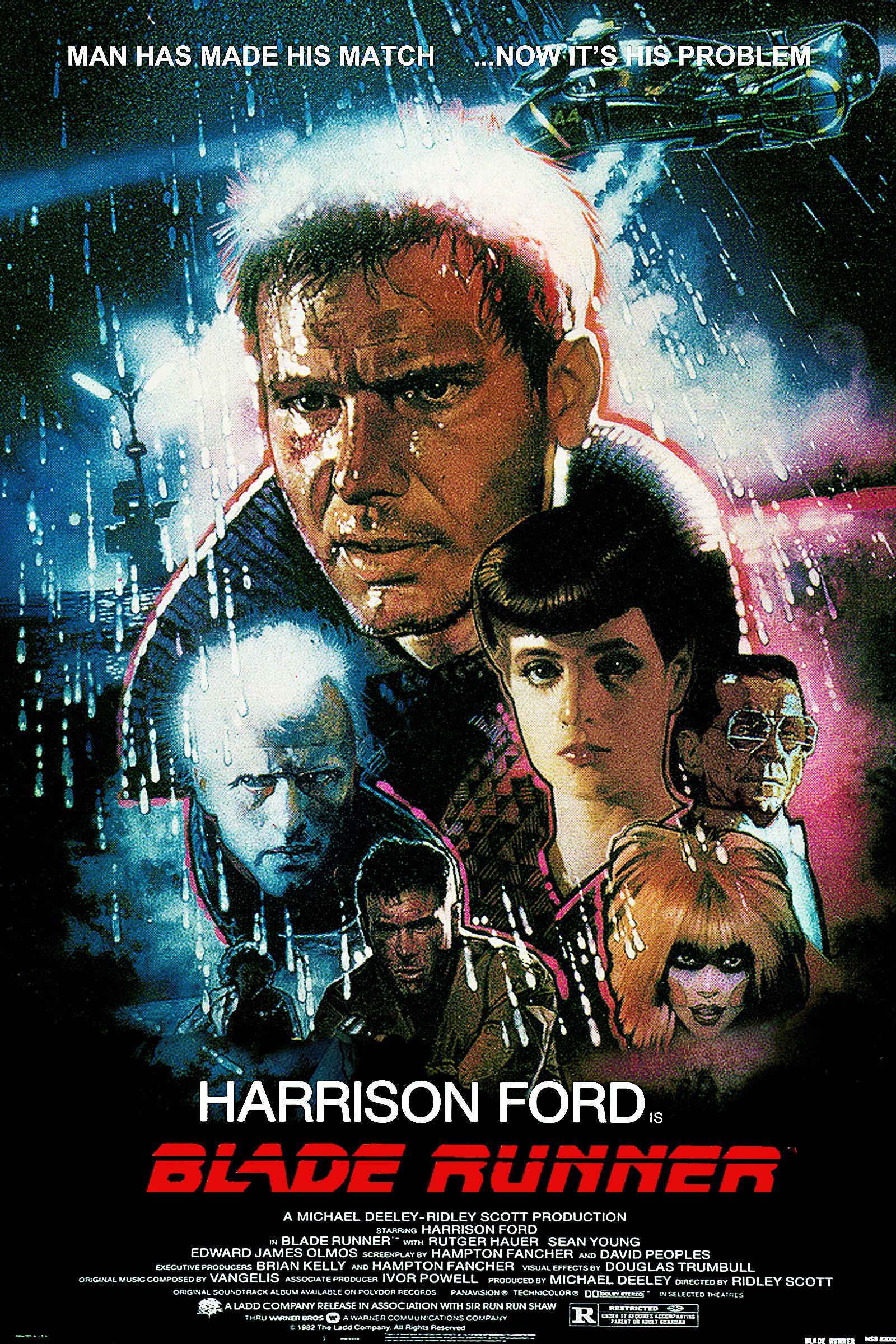
13. **Blade Runner (1982)**Ridley Scott’s *Blade Runner* is lauded for its rich, atmospheric depiction of a dystopian future, accurately foretelling sentient artificial intelligences (replicants), oppressive police surveillance, and pervasive advertising that saturates the urban landscape. While these elements are crucial to its enduring relevance, the film also made a subtle, yet increasingly eerie, background prediction about environmental shifts that are now becoming terrifyingly real in Southern California.
The film’s Los Angeles, set in 2019, is characterized by incessant rain and a perpetually gloomy, smog-choked atmosphere. This vision seemed starkly incongruous with the sunny disposition typically associated with Southern California. However, recent years have seen a dramatic shift, with events like Tropical Storm Hilary—the first such storm to hit the West Coast in 80 years—and unprecedented deluges of rain. While the region desperately needed rain after years of persistent drought, this transformation is making the climate eerily resemble *Blade Runner*’s perpetually wet cityscape.
The constant downpour envisioned in *Blade Runner* is tragically coming to pass as global climate change continues to wreak havoc on established weather patterns. What was once a subtle environmental detail in a fictional future is becoming an unsettling reality, transforming a region known for its sunshine into something closer to the Pacific Northwest’s temperate rainforest, underscoring the film’s profound and multifaceted prescience.
Read more about: Beyond the Blockbusters: 14 Forgotten Sci-Fi Gems Every Fan Needs to Discover Now!

14. **The Matrix (1999)***The Matrix*, released in 1999, shattered cinematic boundaries with its groundbreaking visuals and philosophical depth, presenting a future where humanity lives unknowingly within a sophisticated computer simulation controlled by sentient machines. While Silicon Valley continues to make debatable choices with AI, and machines have not *yet* enslaved humanity to use as bio-electric batteries, the film’s core premise of humans existing within and being drawn into virtual worlds has become astonishingly prophetic.
The film uncannily predicted our collective eagerness to enter virtual realms. Much like the crew of the Nebuchadnezzar ‘jacking into’ the Matrix, countless individuals now habitually dive into digital spaces from the moment they wake. Whether it’s the morning ‘doom scroll’ through social media feeds or the hours lost to an algorithmically curated content stream, most people are hopelessly tethered to one digital feed or another, seeking information, entertainment, or connection.
Beyond passive consumption, the rise of the Metaverse and advanced Virtual Reality (VR) headsets allows users to actively step into immersive digital worlds. Here, they can kill monsters, pilot mechs, or simply craft an entire ‘second life’ away from the complexities of the real world. *The Matrix*’s vision of a simulated reality, once a terrifying possibility, now mirrors our pervasive engagement with digital universes, making its exploration of human dependence on virtual spaces more relevant than ever.
Read more about: Beyond the Blockbusters: 14 Forgotten Sci-Fi Gems Every Fan Needs to Discover Now!
As we reflect on these cinematic prophecies, it becomes clear that science fiction is far more than mere entertainment. It is a powerful cultural seismograph, registering the tremors of future possibilities long before they become seismic shifts in our reality. These films, born from the imaginations of storytellers, challenge us to consider the trajectories of our technological advancements and societal choices. They serve not just as historical markers of prescience, but as ongoing invitations to critically engage with the future we are actively building, reminding us that foresight can be a gift, but only if we choose to heed its warnings and embrace its profound implications.

